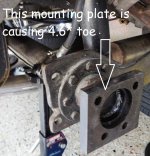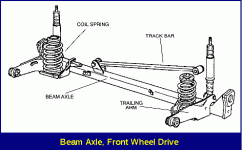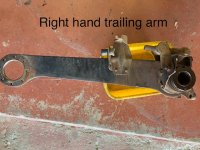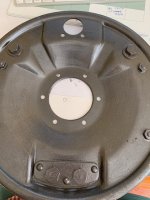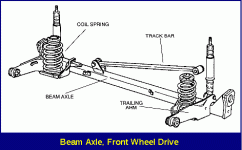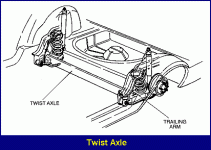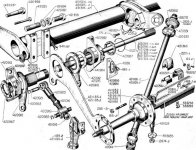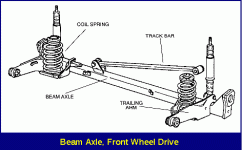In the next weeks I will be fabricating a new rear axle for my 1949 Light 15 to incorporate the existing torsion bar system plus disc caliper mounting brackets.
If anyone is interested I can picture & document what I'm doing & give dimensions?
The reason I'm doing this is that the current axle has been modified by others over eons & after spending about $300 on wheel alignments, the last being FOC @ a truck shop that bends axles only to be told they couldn't do it ~ there is 5.1° total toe on the rear with the drivers side 4.6° ~ I decided it would be cheaper to setup & build a new axle from scratch.
Bought complete axle, hubs & bearings from Swiftco ~ 45mm solid beam for $223 & will water-jet the 2 axle to torsion arm brackets & the 2 caliper brackets. All up I reckon it will be about $500.
Please advise. John.
If anyone is interested I can picture & document what I'm doing & give dimensions?
The reason I'm doing this is that the current axle has been modified by others over eons & after spending about $300 on wheel alignments, the last being FOC @ a truck shop that bends axles only to be told they couldn't do it ~ there is 5.1° total toe on the rear with the drivers side 4.6° ~ I decided it would be cheaper to setup & build a new axle from scratch.
Bought complete axle, hubs & bearings from Swiftco ~ 45mm solid beam for $223 & will water-jet the 2 axle to torsion arm brackets & the 2 caliper brackets. All up I reckon it will be about $500.
Please advise. John.

